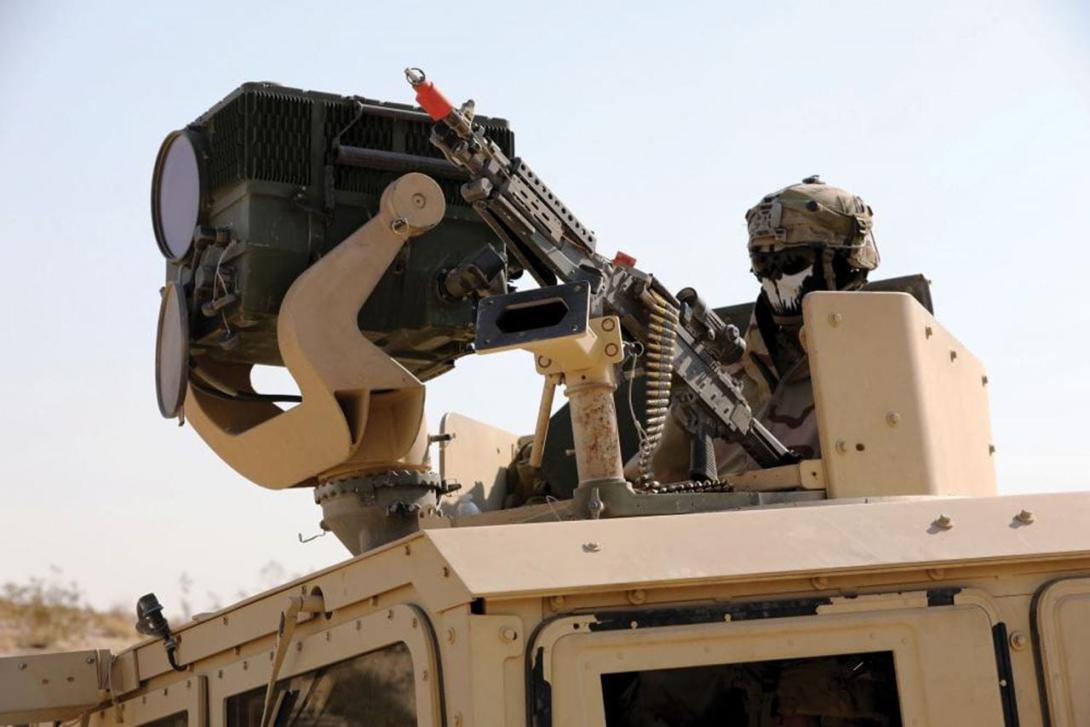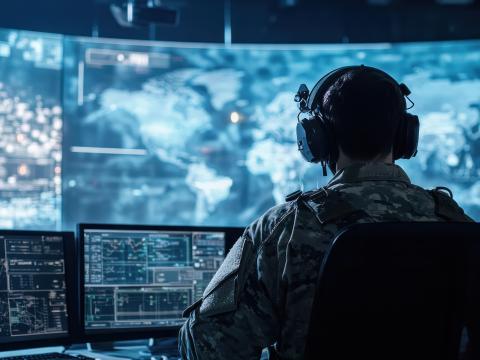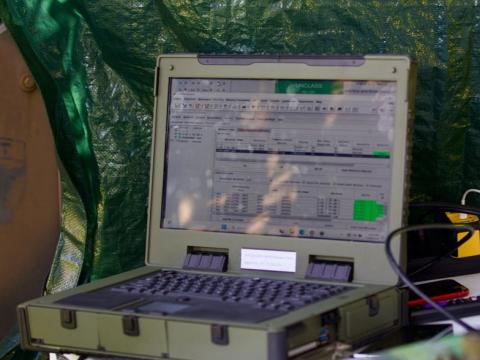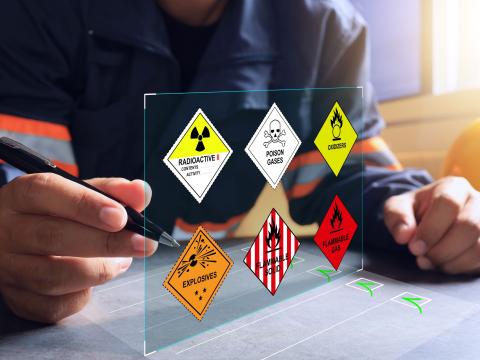Army Looks Forward on Forward-Looking Infrared Sensors
As the U.S. Army produces third-generation forward-looking infrared (FLIR) sensors, officials are exploring emerging capabilities that might be integrated into fourth-generation systems.
FLIR technology detects heat and creates images, allowing troops to “see” through darkness, smoke, rain, snow and fog. FLIR-enabled electronic sensors can be found on weapons or attached to armored vehicles and fighter jets, a Raytheon website points out. It “gives operators the ability to perform targeting, reconnaissance and fire support under the cloak of darkness” and enables soldiers to “peer through dust storms, see enemies in hiding and capture high-resolution pictures without compromising their positions.” The third-generation sensors, known as 3GEN FLIR, are currently in low-rate production. They provide high-definition resolution and magnification with increased precision from much greater distances, Raytheon says.
The Army’s 3GEN FLIR program incorporates high-definition, dual band mid- and long-wave infrared sensing for reconnaissance, surveillance and target acquisition in day, night and degraded battlefield environments. The technology provides increased information fidelity, situational awareness, lethality, survivability, and freedom of maneuver and action in the execution of operations across the full spectrum of conflict, an Army website explains.
Lareina Adams, the Army project manager for terrestrial sensors, oversees the 3GEN FLIR program. In a recent interview with SIGNAL Media, she noted that the service intends to integrate 3GEN FLIR into its new target acquisition system known as the Future Advanced Long-range Common Optical/Netted-fires Sensor (FALCONS), which Adams suggested might include artificial intelligence and semi-autonomy capabilities.
FALCONS will replace, a multifunction, line-of-sight target acquisition sensor suite that provides real-time target detection, recognition and identification that will ultimately be replaced by a new target acquisition system known as the Future Advanced Long-range Common Optical/Netted-fires Sensor (FALCONS), which Adams suggested might include artificial intelligence and semi-autonomy capabilities.
“I’ll talk about one other effort that we’re doing related to semi-autonomy. With the advancement of technologies in the arena of deep learning, machine learning, artificial intelligence, we’re now working to modernize one of our legacy capabilities, which is the Long Range Advanced Scout Surveillance System or LRAS3,” she said. “[LRAS3] has been operational for a long time and has significant capability; however, with the incorporation of third-gen FLIR, the dual-band sensor, FALCONS will be able to leverage target detection and recognition to provide scouts with the more advanced surveillance and reconnaissance system.”
She added that the Army is in the early stages of that effort. “We’ve had one-on-one meetings with industry, and now we’re working to finalize our acquisition and contract strategy to be able to deliver that capability.”
A request for information document released last summer explained that the Army needs an advanced long-range sensor to meet its near-term Army of 2030 objectives and be postured to support the Army of 2040. “FALCONS is an optical sensor system that can detect, recognize, identify and locate threat targets at ranges in excess of the threat’s detection/weapon systems effective ranges in all weather and battlefield conditions.”
Adams indicated she expects the program to kick off in the 2026 fiscal year contingent on other factors, such as funding availability. The acquisition strategy will focus on user feedback, industry partnerships and rapid technology delivery, Adams indicated.

I think the next phase after that would likely be autonomy. I don't know that we’re there yet, at least from a terrestrial sensors perspective.
And the technology is already mature, which should enable relatively rapid acquisition. “From a maturation perspective, the technology is there. FALCONS will be a benefactor of third-gen FLIR capability, which is already in low-rate production. I don't anticipate any challenges there from a technology perspective. We’re actually looking at being more forward-looking now and trying to determine what a fourth-gen FLIR capability would look like,” she said.
It's important to explore fourth-generation FLIR now to maintain an edge over potential adversaries. “The technology, because it evolves so quickly and we know that others are working on whatever the next thing is, it’s important for us to be a lot more forward-looking, so even before third-gen FLIR probably makes it out the door we will be looking at what’s next, what would be the next evolution of that system.”
Future FLIR systems are expected to help the Army achieve its vision for “deep sensing,” a top priority for the service, and could include a degree of autonomy. “It’s on the path of the Army pursuing semi-autonomous capabilities, so a combination of autonomous functions, as well as having a human in the loop. I think the next phase after that would likely be autonomy. I don't know that we’re there yet, at least from a terrestrial sensors perspective,” Adams said.
She suggested that human-machine integration could be important to future FLIR systems but that the possibility has not yet been fully explored. Asked how it might be used, she said without going into details, that a once-shelved technology could be integrated into FLIR-enabled sensors. “We actually have a capability that is within the force protection suite that I was not aware of. It was a technology that was demonstrated a while ago for an operational requirement in theater that we had since pulled back because the requirement no longer existed,” Adams reported. “But what I think we can do is explore the potential of using that requirement again, and possibly having that feed a fourth generation FLIR requirement as well, because that technology has quite a lot of potential that we just haven’t been able to explore yet.”
The terrestrial systems program management office has added positions to explore the human-machine integration possibilities. “We’re looking at areas like that to try to figure out what the potential of those technologies are in our portfolio. We’ve brought on a new tech director in the PM-TS headquarters. We have a new acquisition management cell that we stood up as well, who are going to start having those conversations and look into the art of the possible.”





Comments